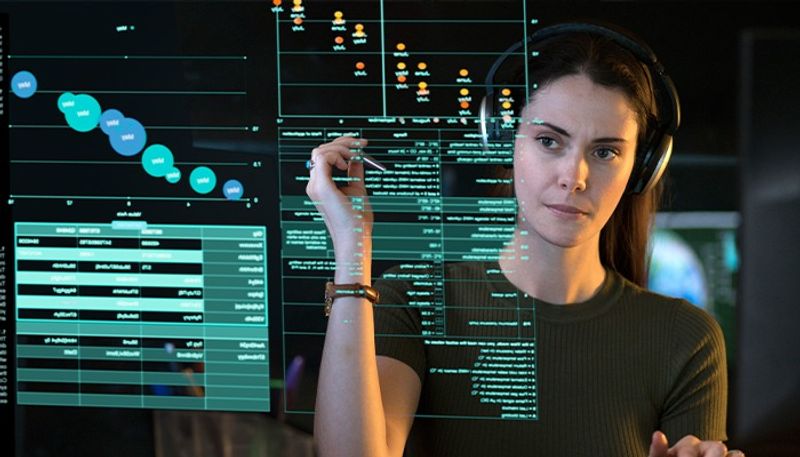synopsis
Learn how to identify deepfake videos and images to protect against misinformation and reputation damage. Recognize lip sync issues, facial distortions, strange expressions, and more.
Celebrated Indian actress Rashmika Mandanna recently became the latest victim of Deepfake technology misuse. Using the deepfake technology Rashmika Mandanna's face was morphed over a video of a social media influencer from Britain. The video went viral on the internet. Many renowned celebrities like Amitabh Bachchan demanded a legal action over this and numerous fans expressed their anger and concern over the misuse of AI.

Deepfake is an AI technology, that is used in creating content in the form audio and videos. The resultant content is either totally fake or made from manipulating already available content on the internet. However, thanks to the brilliance of AI, it is difficult to identify whether the resultant content is fake or real, just by looking at it. Thus, it's misuse to propagate misinformation or ruin someone's reputation has become a major concern among people.
ALSO READ: Explained: What is Deepfake? the AI technique that Rashmika Mandana has fallen victim of
In addition, many celebrities have been a victim of morphed videos and photos around the world in the past. Therefore, it is extremely necessary to know how to identify a fake content made from using deepfake tech.
Here's how you can identify a deepfake video:
1. Watch the person's lips and face closely. If their lip movements don't match the words they're saying, it might be a deepfake. In other words, their talking and lip movements should sync up naturally.
2. Look for strange things like blurriness or distortion around the person's face. These weird things can show that someone manipulated the video.
3. Pay attention to the person's blinking and facial expressions. If they don't blink like a normal person or if their expressions seem strange, it could be a fake video.
4. Check if the lighting and shadows on the person's face look right. If the lighting doesn't match the surroundings or if the shadows seem odd, it might be a deepfake.
5. Examine the background and what's happening around the person. If objects or people in the background seem to move or change in weird ways, the video could be fake. The background should look natural and normal.
6. Eye Contact: Pay attention to the person's eye contact. In a real video, people naturally look at each other or at objects around them. If the person's eyes don't seem to focus correctly or they appear to be looking in strange directions, it could be a deepfake.
7. Voice Quality: Listen to the person's voice. Sometimes deepfake videos may not match the person's real voice. If the voice doesn't sound right or if it's unusually robotic or distorted, it could be a sign of manipulation.
ALSO READ: Rashmika Mandanna to Scarlett Johansson, celebs who were victims of Deepfake
In addition to above points here's how to identify a deepfake image:
1. Weird and Almost Real: If a picture looks almost real but something about it seems strange or creepy, it might be a deepfake. Trust your gut feeling.
2. Strange Picture Quality: Check the picture for odd things like blurry spots, weird pixel patterns, or distortions around the person's face. Deepfakes can sometimes make these mistakes.
3. Background Mismatch: Deepfakes might make mistakes in the background, like making objects look bent or the background too blurry. If it doesn't fit the rest of the scene, be suspicious.
4. Check Where It Came From: Always be careful about where you got the picture. If it's from an unknown or not trustworthy source, or if something seems fishy about the situation, be cautious.
)
 subscribe to Asianet News Whatsapp channel by clicking here.
subscribe to Asianet News Whatsapp channel by clicking here.